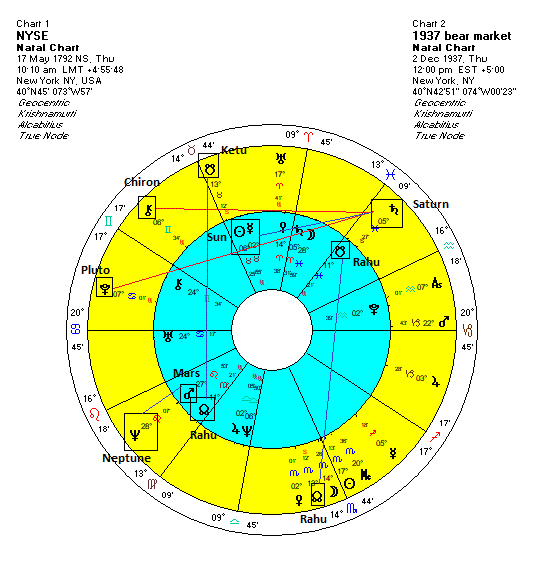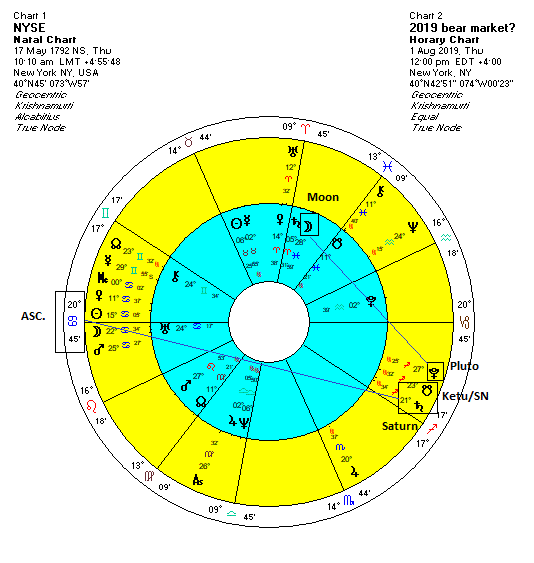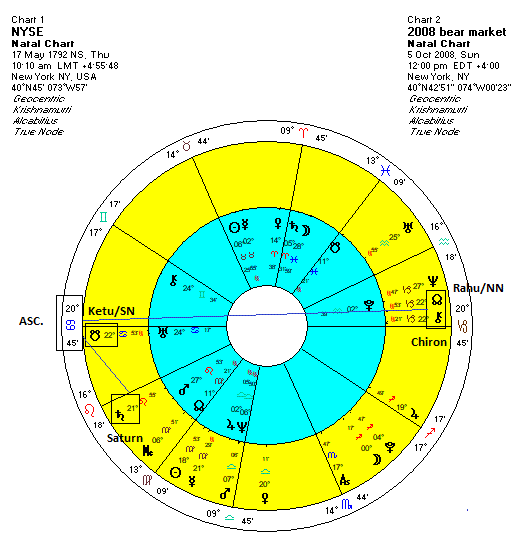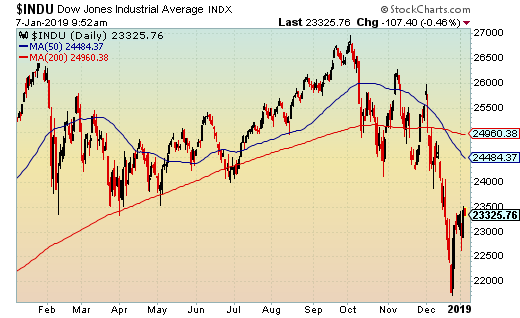 (7 January 2019)
The New Year got off to a positive start for most global stocks
as investors tried to put the unnerving 2018 decline behind them.
Friday saw a surge of more than 3% on US markets on the perfect
storm of a strong US jobs report, an interest rate cut in China
and above all a dovish statement from Fed Chair Jay Powell not to
hike too quickly, if at all. Markets are still fragile and there
remains considerable uncertainty about what may lie ahead for
this year.
(7 January 2019)
The New Year got off to a positive start for most global stocks
as investors tried to put the unnerving 2018 decline behind them.
Friday saw a surge of more than 3% on US markets on the perfect
storm of a strong US jobs report, an interest rate cut in China
and above all a dovish statement from Fed Chair Jay Powell not to
hike too quickly, if at all. Markets are still fragile and there
remains considerable uncertainty about what may lie ahead for
this year. My basic expectation is that stocks may well recover somewhat over the next two or three months but that the planetary alignments look very bearish for much of the year. As I see it, 2019 is shaping up to be a negative year for most global stock markets as the bear market is likely to worsen. Even if there is a significant recovery going into spring, it seems unlikely they will return to their previous highs.
Based on a review of several major bear markets, I have identified the key common factors that are found the planetary alignments during declines of more than 30%. This list of factors is certainly not exhaustive but it does appear to be crucial in determining whether a decline will be a smaller 10% correction or a historically significant bear market where stocks fall by more than 30%. In that sense, these planetary factors may be seen as necessary, but probably not sufficient conditions for a bear market.
Here they are in no particular order:
1) there must be a close 15, or ideally, 30 degree multiple alignments of Saturn or the Nodes with at least one slow moving planet -- Uranus, Neptune, Pluto and Chiron.
2) during the duration of the decline, Saturn should station either direct or retrograde while in close alignment with at least one other slow moving planet
3) these alignments will have greater negative influence if they align closely to key natal planets/points in the horoscope of the New York Stock Exchange (1792), especially if they are in hard aspect (90, 180 degrees).
4) there must be close alignments involving Saturn and Mars and at least two other planets in the pertinent progressed charts of the NYSE
5) eclipses will intensify the bearish sentiment if they are aligned with Saturn or with sensitive points in the NYSE chart.
Ray Dalio's 1937 analog
One intriguing comparative case is the bear market of 1937-8 in which stocks fell 60% over a one-year period. Hedge fund guru Ray Dalio (pictured above) has highlighted the 1937 case as being the most analogous to the present day since at that time the Fed was similarly raising rates after the economy appeared to be recovering following the Great Depression. Over the past two years, the Fed has also been gradually raising rates after keeping them near zero for seven years after the 2008 meltdown.
The recent market sell-off reflects the unwillingness of investors to buy stocks on margin if they have to pay interest on the money they borrow. Just as in the 1930s, the recovery from the 2007-2009 bear market depended on essentially free money from the Fed. This ultra loose monetary policy has, in turn, produced another bubble which is now showing the first signs of bursting. That's why the Fed backpedaled last week as it may have no choice but to stop raising rates in 2019 and keep the easy money flowing longer.

The Dow topped out in February 1937 and matched that high again in July (DJIA=185). Then stocks sold off sharply for the rest of the year making a low in December (DJIA=120) for a net decline of 35%. They fell 20% further by March 1938. We can see how the alignments for the interim bottom in December 1937 paint a grim picture. Saturn (5 Pisces) stationed powerfully in early December and formed a near exact 3rd house/60 degree aspect with the Sun (6 Taurus). While the 60 degree sextile aspect involving Saturn is seen as more neutral in Western astrology, it is clearly malefic in Vedic astrology and this is reflected in this massive decline.
In addition, we can see that Saturn forms an exact 135 degree aspect with the Ascendant (20 Cancer). This stationary aspect to the Ascendant degree is intensely negative and will usually correlate with a significant pullback in its own right.
Saturn was also square Chiron and aligned with Pluto with a 120 degree aspect during this last quarter of 1937. This fulfills another bear market requirement. The conjunction of Neptune with Mars throughout 1937 was another contributing factor since these energies typically do not mesh well.

The alignments for 2019 exhibit some important similarities with 1937. Transiting Saturn will conjoin Pluto and Ketu (South Lunar Node) in the spring and this rare triple conjunction will last until October. Both Saturn and Ketu are considered malefic planets and the alignment with Pluto does not look positive at all. This alignment is at least as bad as the Saturn-Chiron-Pluto alignment in 1937.
But the real problem here is that the Saturn-Ketu conjunction will culminate at the time of the Saturn direct station at 20 Sagittarius in late summer. Any Saturn station at or near 20 degrees of a sign is more likely to coincide with large declines since it will be in an exact alignment with the Ascendant of the NYSE chart at 20 Cancer. Saturn (5 Pisces) formed a no-less potent 135 degree alignment with the Ascendant in 1937. Saturn (21 Leo) also aligned with Rahu/Ketu and Chiron and the NYSE Ascendant in October 2008 at the worse phase of the financial meltdown. And it is worth noting that Saturn (20 Taurus) stationed direct just a few weeks after the 9/11 attacks and therefore was very close to that degree when the market declined in September 2001.
Pluto is also going to form a tense square alignment with the Moon (28 Pisces) in the NYSE chart. Since Pluto travels very slowly, this square will be in effect for most of the year. The last time Pluto formed a square with the Moon was in 1931-1932 at the depths of the depression. Obviously, this isn't bullish.
We can also see that the solar and lunar eclipses this July will align closely with Saturn and Pluto. This suggests that the period immediately after the eclipses are more likely to correspond with declines. Since Saturn is due to station in September, this greatly increases the probability of a major decline in the late summer and early fall.

Of course, stocks may well rise ahead of the tightening of the Saturn-Ketu-Pluto conjunction in April. But another move lower does look quite likely at some point after that. Given the level of affliction to the NYSE chart, I would expect the decline to be larger than what we have seen over the past three months. It does seem like a bear market is coming in 2019.
For more detailed market analysis, please check out my weekly subscriber newsletter. It is published every Saturday and covers the US and Indian stock markets, as well as currencies, gold and oil.
